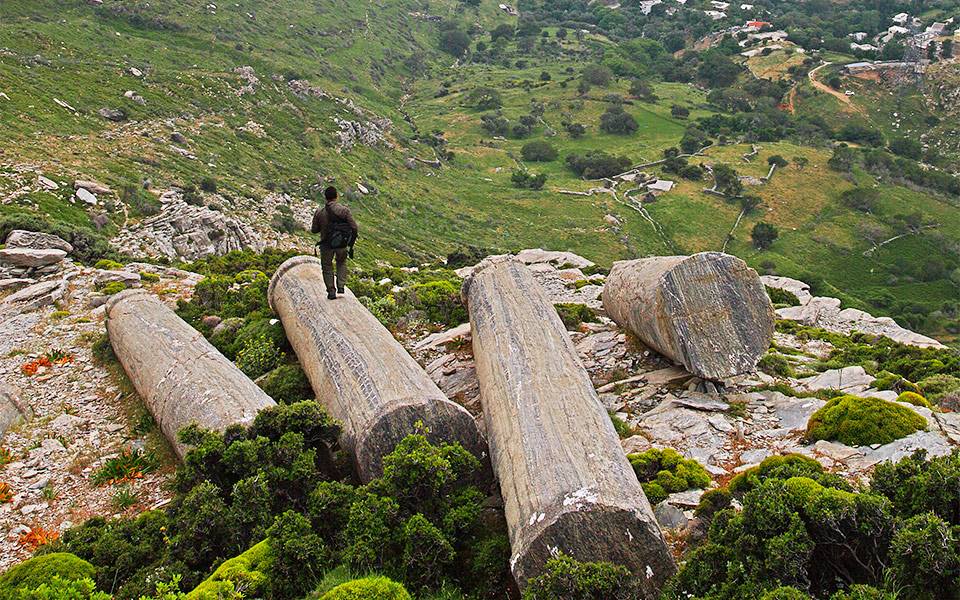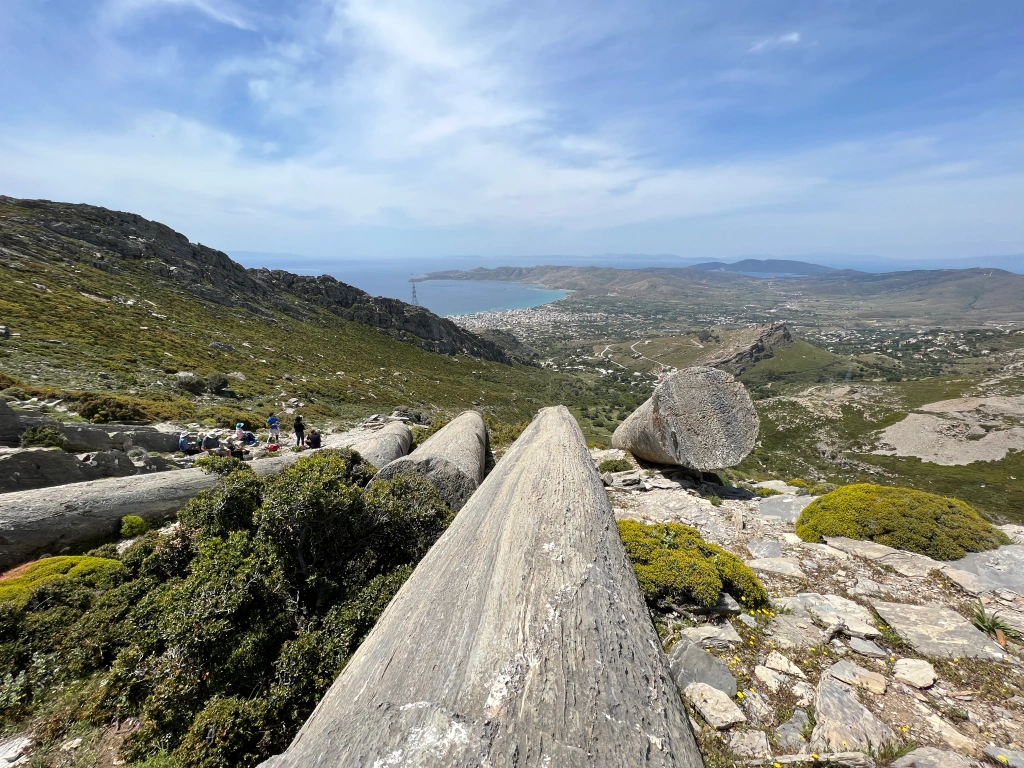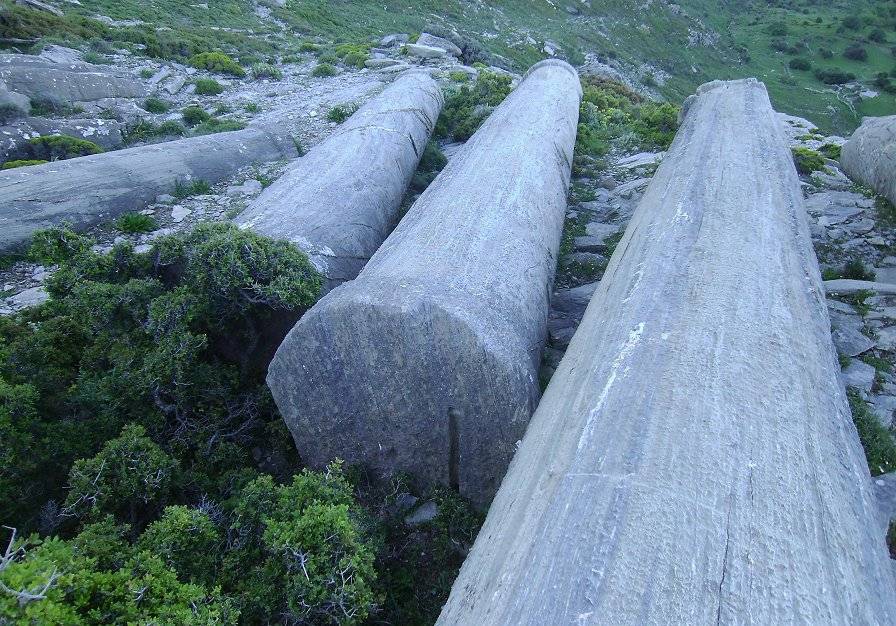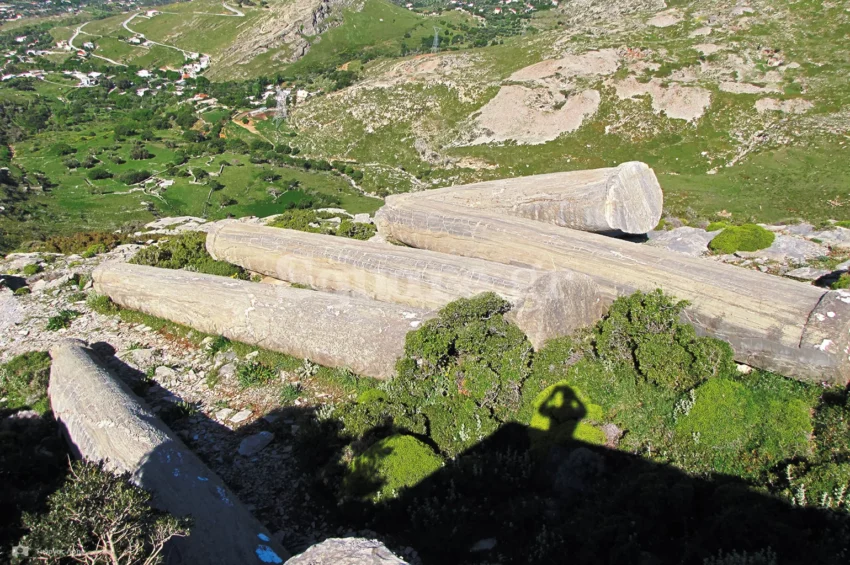The Karystos Ancient Quarry, also known as the Cipollino Marble Quarries, is a remarkable archaeological site located on the Greek island of Euboea. This site is renowned for its unique green marble, known as Cipollino, which was highly prized in ancient times. The quarries have a rich history that dates back to the Classical era of Greece and were extensively used during the Roman period. The marble from Karystos was used in many significant buildings across the ancient world, including the construction of temples, public buildings, and monuments. The site offers a fascinating glimpse into the ancient methods of quarrying and marble extraction that have influenced architecture throughout history.
Get your dose of History via Email
Historical Background of Karystos Ancient Quarry
The Karystos Ancient Quarry, located on the southern part of Euboea, has a history that intertwines with the development of ancient Greek and Roman architecture. Discovered by modern archaeologists in the 19th century, the site revealed extensive remains of quarrying activity. The Greeks initially exploited the quarries, but it was during the Roman Empire that the demand for Cipollino marble soared.
Historians attribute the construction and expansion of the quarries to the Romans, who valued the aesthetic qualities of the green marble. The marble was transported across the empire, adorning the palaces and baths of Rome, and reaching as far as North Africa and the Middle East. The site was not only a place of labor but also a hub of ancient engineering and logistics.

After the fall of the Roman Empire, the quarries fell into disuse and were eventually reclaimed by nature. They remained untouched for centuries until their rediscovery. The site has not been the scene of any historically significant events since antiquity, but it stands as a testament to the ancient world’s influence on architecture and design.
While the exact date of the quarries’ inception is unclear, evidence suggests that quarrying activities peaked during the 1st to the 3rd century AD. The methods used by the ancient quarry workers, including the use of iron chisels and wedges, are still visible on the rock faces, providing insights into the labor-intensive process of marble extraction.
The Karystos Ancient Quarry is not known to have been inhabited later, as it was primarily an industrial site. However, the marble extracted from this area has lived on in the form of enduring monuments, contributing to the quarry’s historical importance.

About Karystos Ancient Quarry
The Karystos Ancient Quarry is an archaeological site that offers a window into the ancient world’s quarrying techniques. The green marble, known as Cipollino, is characterized by its distinctive color and wave-like patterns, which made it a popular choice for decorative purposes in ancient times.
The quarry’s landscape is marked by large rectangular trenches from where the marble blocks were extracted. These trenches also reveal the ancient method of cutting the marble, which involved carving grooves into the rock, inserting wooden wedges, and then soaking these with water to cause the wood to expand and split the marble.
Architectural highlights of the site include the remains of the stoneworkers’ workshops and the intricate system of roads and tracks used to transport the heavy marble blocks. The quarry also features several unfinished blocks, providing a snapshot of the quarrying process as it was abruptly halted.
The building materials from the Karystos Quarry were not limited to local use but were exported across the Roman Empire. The marble’s durability and beauty contributed to its widespread use in constructing various structures, from temples to bathhouses.
Today, the site is a testament to the skill and craftsmanship of the ancient quarry workers. The precision with which they extracted and prepared the marble blocks is still evident, despite the passage of time.
Theories and Interpretations
The Karystos Ancient Quarry has been the subject of various theories and interpretations regarding its use and significance. One theory suggests that the quarry’s marble was particularly favored for its structural integrity, which made it suitable for supporting large buildings.
Some mysteries surround the quarry, such as the exact methods used for transporting the massive marble blocks across the Mediterranean. While historians have pieced together likely scenarios involving ships and lifting devices, the full logistics remain a topic of research and speculation.
Interpretations of the site have had to rely on historical records from ancient authors, as well as the physical evidence left behind. These records, while limited, have provided valuable insights into the scale and importance of the quarrying operation.
Dating of the quarry has been carried out using various methods, including analyzing tool marks and carbon dating organic materials found at the site. These studies have helped establish a timeline for the quarry’s peak activity during the Roman period.

Despite the extensive research, the Karystos Ancient Quarry still holds many secrets. Ongoing archaeological work continues to uncover new information about the techniques and tools used by the ancient quarry workers.
At a glance
- Country: Greece
- Civilization: Greek and Roman
- Age: Classical era, peak activity 1st to 3rd century AD

